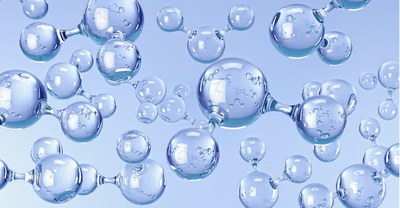Energy: Safer hydrogen production thanks to CO2
19/11/2015
ENEA has patented an innovative, safe, affordable and environmentally-friendly high temperature hydrogen production process designed for large-sized petrochemical companies
Research in the energy sector is becoming ever more oriented towards “electrolytic technologies”, increasingly proving to be a key factor for hydrogen exploitation and production, both as energy vector and for conversion and storage of renewable energy.
 Current hydrogen production – in confined space and at high temperature - entails the risk of flame and explosion. But this area of research on solid oxide electrolysers, the most widespread technology for high-energy hydrogen production, has yet to be thoroughly investigated. An additional hazard factor lies in the fact that they use complex gas circulation patterns – including hydrogen recirculation - to maximize production efficiency and prevent the corrosion of materials inside the reactor. This innovative patent offers a solution to dramatically reduce the risk of flame and explosion – even in case of hydrogen/oxygen leaks and plant failures - avoiding the critical “step” of hydrogen recirculation.
Current hydrogen production – in confined space and at high temperature - entails the risk of flame and explosion. But this area of research on solid oxide electrolysers, the most widespread technology for high-energy hydrogen production, has yet to be thoroughly investigated. An additional hazard factor lies in the fact that they use complex gas circulation patterns – including hydrogen recirculation - to maximize production efficiency and prevent the corrosion of materials inside the reactor. This innovative patent offers a solution to dramatically reduce the risk of flame and explosion – even in case of hydrogen/oxygen leaks and plant failures - avoiding the critical “step” of hydrogen recirculation.
Here’s how it works.
The process developed by ENEA operates at temperatures in the range of 500-550 C° (inferior to the 700 C° and 900 C° of the current technologies), is fed by solar concentrated energy and can simultaneously produce hydrogen and a nitrogen free mixture of oxygen and carbon dioxide. Its operational safety derives from the use of CO2, produced during the process. This gas is able to extinguish – at the concentration present in the process - any type of flame and dramatically reduce the risk of hydrogen flammability. In addition, carbon dioxide can be easily separated from hydrogen and oxygen and, here is the novelty of the ENEA Patent, is reintroduced into the electrolyser in place of hydrogen - as is instead the case for traditional solid oxide electrolysers - with a positive impact on operational safety and costs. The increased safety and streamlining obtained could facilitate the evolution of high temperature hydrogen production technologies towards large-sized facilities, particularly for major companies with a significant hydrogen consumption, such as oil refineries, organic chemical synthesis and fertilizers industries.
Inventors:
Stefano Frangini, stefano.frangini@enea.it - Pietro Tarquini, pietro.tarquini@enea.it - Claudio Felici, claudio.felici@enea.it
The Patent, deposited on May 29 2015 with number 102015000019528 and entered in the ENEA Patent Database on June 22 2015, is available for licesing.
